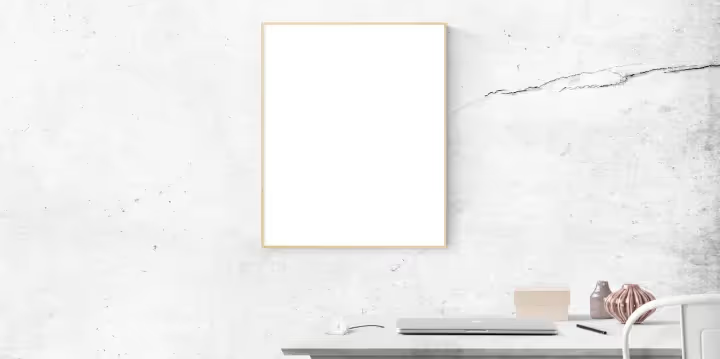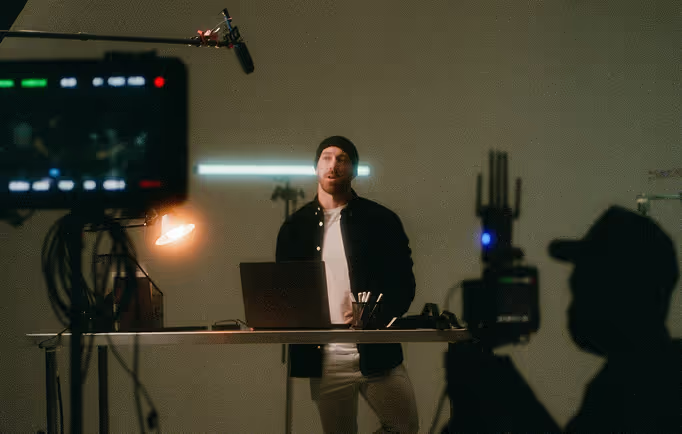How To Visually Design Your Brand Through Animation

Animation is a visceral visual medium which demands you take control of it. There’s no passive visual elements: you can’t sit a camera down and film whatever happens in front of it. Every element you see on screen is intentionally created and placed.
If designers and animators choose their elements so carefully, then how can one explainer video feel inexplicably appealing while another just doesn’t sit right? It’s due to the way we use the 7 elements of design, and how we arrange them on screen using the 11 design principles. Today we’re giving a bite-sized lowdown on the elements and principles that help take an animation from bland to grand.
7 elements of design
1) line
Line is an element that’s become ever more relevant with the popularity of motion graphics videos. The decision of whether to use traditional black outlines, coloured outlines or a lack of outlines in your design affects whether your animation looks cartoony, vector-style, or painterly.
2) colour
The colour palette of a video affects the viewer on a number of levels. The psychology of colours reveals that particular hues suggest particular moods and cultural associations. In the western world for example, red is an active colour that can suggest anger, danger, heat, passion, or stop signs, to name a few. Background characters rarely wear red due to the immediate association of activity and focus. The repetition of a colour scheme can also help reinforce the presence of a particular group, like a brand logo or country flag.
3) shape
We covered the basics of shape theory in our article on creating appealing characters, but if you missed it here’s the scoop: short animated videos (like explainers) benefit greatly from exaggerated character designs because the viewer’s eye is trained to latch onto overall shapes and their inherent meanings. A square character is stable, strong and stocky (because a square can’t roll around), a round character is fun and sweet (due to the lack of aggressive points), and an inverted triangular character is powerful and dynamic (the classic V-shape body type).
4) texture
Texture is to do with the way the surface of an object looks: how we think it would feel if we could physically touch it. Texture experimentation is increasingly common in motion graphics videos, as blending a texture over the shapes tends to help ease the stark, sometimes lifeless, look of vector graphics.
5) form
Form refers to the three-dimensionality of an object: whether it’s the ‘true’ visual depth of a 3D CGI graphic, or the illusion of depth created by shading a 2D image in the right way. Geometric and organic shapes can (and often are) combined to create form, though the prevailing trend in motion graphics at the moment is to use basic geometric forms with stylised camera moves to construct easy-to-digest visuals.
6) space
To use space effectively we need to consider both positive space (the area(s) filled by the major objects) and negative space (the area(s) around the objects, usually filled by backgrounds). Too much positive space has a uncomfortably crowded effect, while a lot of negative space projects a sense of isolation.
7) value
Value refers to the relative levels of light and dark in a design. This is an important element for quick visual recognition, especially in animation. Character poses need to be strong enough that the action can be ‘read’ even in silhouette. Conversely, the value of the characters/graphics needs to be strong enough to stand out against the background colours.
11 principles of design
Even more important than the elements of design are the ways we choose to arrange them on the screen. The areas that determine visual appeal are the Principles of Design, and in terms of animation we use these principles to frame not just single scenes, but the place of those scenes in the context of the wider video. This is what makes a design visually cohesive.
balance
The balance of a design operates like a set of scales. A number of small objects can balance out one large object, and an expansive use of darkness can be offset by just a few focal points of light. Balance is most often concerned with the layout of the design, whether it’s symmetrical, asymmetrical or radial, and how the focal point balances out the negative space.
proportion and perspective
Proportion deals with the size and scale of the different elements of design, and how they fit in context with each other. The use of proportion, value and space affects the visual perspective we apply to an object. An otherwise 2D image gains depth depending on how we arrange and shade its objects.
It’s in this way that perspective adds realism and allows the viewer’s eye to grasp how the ‘world’ of the design is laid out in three-dimensional space. In terms of animation we also have the choice of working with computer-generated 3D images, 2D images laid out in digital 3D space, or entirely flat 2D.
emphasis and movement
The methods used to make a particular object of the design the focal point. Emphasis creates comfort by making it clear to the viewer’s eye what they should be focussing on: for example, making characters/objects stand out from their backgrounds by using different colours or values.
While emphasis often determines the starting point for the eye, movement concerns the larger path the viewer’s eye takes across the design. In a still image this path is largely determined by a visually appealing layout plan, like the golden ratio or the rule of thirds. In animation, movement of the eye is also affected by the literal motion of the objects on screen. The layout and speed of movement can affect whether a design appears calm or manic, pleasing or irritating.
repetition, rhythm and pattern
The main use of repetition in a design is to achieve a sense of consistency. Repeating shapes or objects gives the viewer a sense that the different design elements belong together in the same ‘world’, and using repeating colours results in a palette that can set the overall visual mood of a design.
Rhythm involves the regular movement or repetition of elements to create a visual ‘beat’. Using rhythm can create a comforting sense of orderliness, or help push an otherwise distracting object into the background as the viewer’s eye becomes accustomed to the regularly repeated pattern.
unity and variety
Unity is the visual relationship between the elements of design which makes those elements appear to belong together. Meanwhile variety, as you might expect, is used to create visual interest in a design. As the counterpart to unity, variety uses differing elements to increase the complexity of a design’s visual relationships. It’s a delicate balancing act as too much variety shows a lack of purpose while too much unity is dull to the eye.
harmony
Harmony is when we pull all the pieces together in an effective way, where each element of the design complements another. We achieve harmony by using the other principles in cooperation with each other. Unity balances out variety, proportion helps establish perspective, emphasis drives movement. When we achieve harmony, it means we have a visually cohesive animation that helps to keep the viewer’s attention, lead the eye, and appeal to the viewer for reasons they won’t even consciously recognise.
Start a






